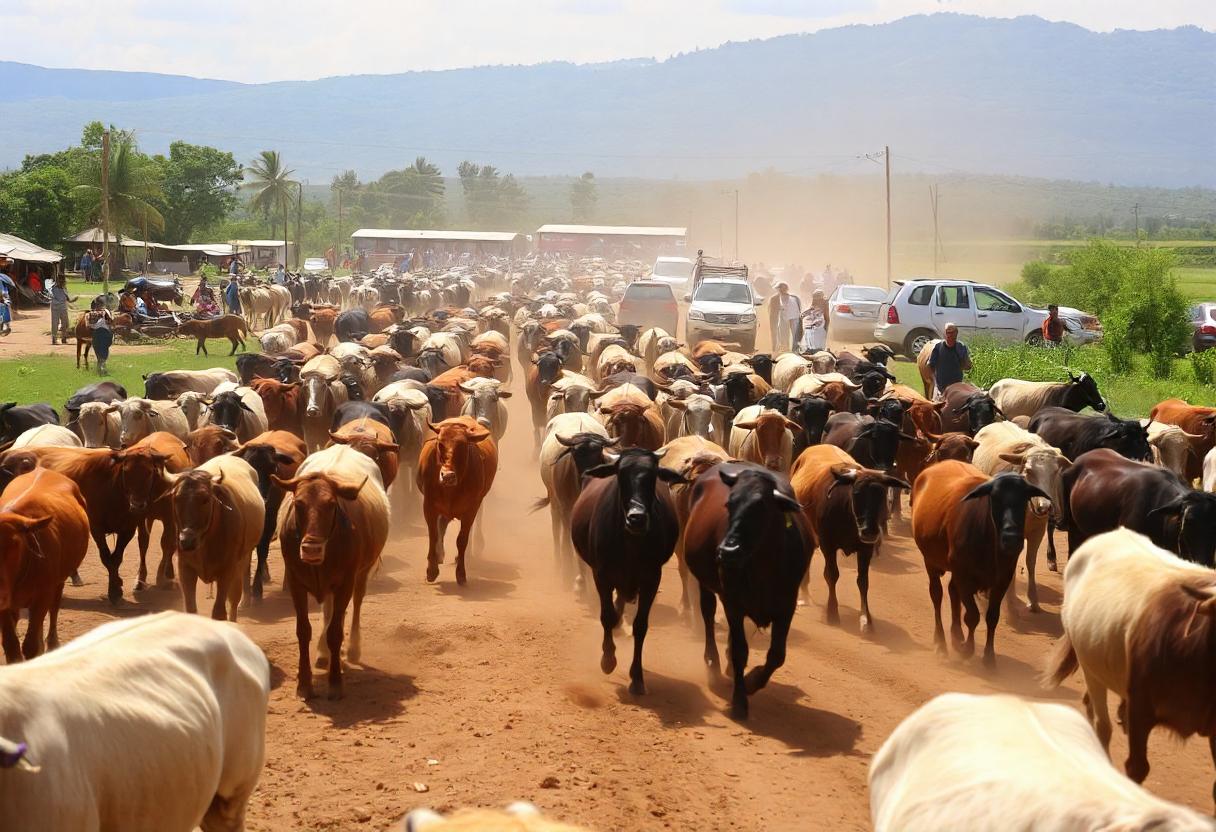
Agriculture zone stampede refers to the rapid and often uncontrolled movement or migration of farmers and agribusinesses into a particular agricultural zone. This movement is driven by favorable conditions, such as climatic changes, government incentives, or high market demand for specific crops. While this influx can boost economic growth, it also presents several challenges that need to be addressed.
Drivers of Agriculture Zone Stampede
- Climate Change Adaptation One of the main factors behind agriculture zone stampedes is climate change. As global temperatures shift, certain regions become more suitable for crops that previously couldn’t thrive there. Farmers often relocate or adjust their planting zones in response to these changes. For instance, warmer temperatures may extend the growing season for certain crops in regions that were once too cold, enticing farmers to move.
- Government Policies and Subsidies Governments may introduce incentives like subsidies, tax breaks, or infrastructure development in particular agricultural zones to encourage farmers to cultivate certain crops. These policy-driven incentives often lead to a surge in agricultural activity, creating a stampede effect. A classic example is when governments offer favorable loan terms or water access to promote specific industries, drawing numerous farmers to that area.
- Market Demand High global or local demand for certain crops can lead to a stampede in specific agricultural zones. When certain commodities—like soybeans, cotton, or biofuel crops—experience a spike in prices, farmers flock to areas where these crops grow best. This rush is fueled by the promise of high returns, but it can lead to an oversupply that eventually drives prices down.
Challenges Associated with Agriculture Zone Stampede
- Overuse of Resources One of the most significant challenges is the strain on natural resources. When too many farmers flock to a particular zone, the increased demand for water, land, and other resources can result in depletion. Over-irrigation, deforestation, and soil degradation are common issues in regions experiencing a stampede, leading to long-term damage to the environment.
- Land Speculation Another consequence of agriculture zone stampede is the rise in land prices due to speculation. Investors and large agribusinesses may buy up large tracts of land in anticipation of future profitability, driving up the cost for local farmers. This often makes it difficult for smaller farmers to secure affordable land for cultivation, leading to inequality within the agricultural sector.
- Environmental Degradation Rapid migration into agricultural zones often leads to poor land-use practices. In the rush to capitalize on favorable conditions, farmers may overlook environmental conservation techniques. This can result in deforestation, loss of biodiversity, and soil erosion. Unsustainable farming practices can leave the land less fertile over time, making it harder for future generations to farm.
- Social Conflicts Agriculture zone stampedes can also trigger social conflicts between local communities and incoming farmers. Tensions may arise over access to resources like water and land. In some cases, local farmers may feel marginalized or displaced by large agribusinesses moving into the area. These conflicts can escalate and disrupt the social fabric of rural communities.
Economic Impacts of Agriculture Zone Stampede
- Short-Term Economic Gains Initially, an agriculture zone stampede can lead to significant short-term economic benefits. As farmers flood into an area and begin production, local economies may see a boom in jobs, infrastructure development, and increased trade. This influx of activity can contribute to regional economic growth and boost local industries like transportation and food processing.
- Market Saturation However, the rapid increase in production can also lead to market saturation. When too many farmers grow the same crops, supply often outstrips demand, driving down prices and profit margins. This can lead to a boom-and-bust cycle where farmers who once profited from the stampede are left facing financial difficulties.
- Inequality in Wealth Distribution Agriculture zone stampedes tend to benefit larger agribusinesses more than small-scale farmers. Wealthier corporations can invest in advanced technology, secure large tracts of land, and weather price fluctuations better than smallholders. This creates a widening wealth gap, with smaller farmers struggling to compete and often losing out in the long run.